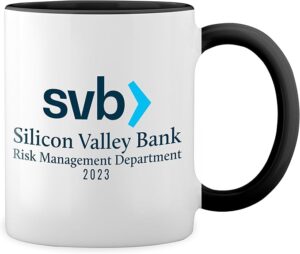What could make a Risk Manager happier, than to be able to buy some merchandise?
Click on the images for more information!










We get calls every day from individuals discussing their career to date and current / former employers. It got me thinking, what does make a good employer these days?
I don’t think “free lunch” or “complimentary fruit basket” can really cut it in 2024. So, lets stick to the important issues . . . . . .
Positive Work Culture: A positive work culture is a “safe space”, one that promotes a supportive, collaborative, and respectful work environment. Employers that prioritize their employees’ well-being, provide opportunities for growth and development, and encourage work-life balance are much more likely to develop a happy, positive culture. In turn making people feel valued and appreciated, making staff retention less of an issue.
Competitive Compensation and Benefits: Employers that offer competitive salaries, bonuses, and tertiary benefits packages attract and retain top talent. Simple.…………there is no magic formula to this one. We live in a world where the cost of living is high. Stop making employees look for ‘greener pastures’ by paying them fairly. (Note: This isn’t all about cash . . . other benefits are important too – e.g. healthcare, retirement plans, flexible work arrangements etc)
Opportunities for Advancement: Employees are more likely to remain engaged and committed to their employer if they have opportunities to advance their career. Employers that offer clear paths for career advancement, mentorship, and professional development will attract new staff and keep existing staff motivated.
Strong Leadership: Effective leadership is critical to creating a positive work environment. Employers that demonstrate strong leadership through clear communication, a focus on employee development, and a commitment to the organization’s mission and values can inspire employee engagement and loyalty.
Commitment to Diversity and Inclusion: A big topic and very important topic. Employers that prioritize diversity and inclusion foster a culture of respect, understanding, and belonging. Organizations that embrace diverse perspectives and backgrounds can benefit from increased innovation, creativity, and productivity. We are all different, with different strengths & weaknesses. Lets make the most of what we each have to offer!
Work-Life Balance: Employers that provide flexible work arrangements, such as remote work options, flexible schedules, or generous time off policies, can help employees achieve a healthy work-life balance. Employers that prioritize their employees’ well-being demonstrate a commitment to creating a sustainable work environment.
What do you think? Have I missed anything?
Rob Starkl
Managing Partner

In the ever-changing landscape of Financial Services, Risk Management stands as a cornerstone, ensuring stability, resilience, and compliance in an ever-evolving environment.
As technology continues to reshape industries, the future of Risk Management in Financial Services promises to be both transformative and essential. From advanced analytics to regulatory evolution, let’s delve into the key trends shaping this critical aspect of the financial sector:
**1. Data-Driven Decision Making:**
Data has emerged as the lifeblood of modern risk management. Advanced analytics, machine learning, and artificial intelligence empower financial institutions to harness vast amounts of data for predictive modeling, scenario analysis, and risk forecasting. By leveraging real-time data streams and sophisticated algorithms, institutions can anticipate and mitigate risks more effectively, enhancing their ability to adapt to changing market conditions.
**2. Cybersecurity Imperatives:**
With the proliferation of digital transactions and the rise of cyber threats, cybersecurity has become a paramount concern for risk management. Financial institutions must continually fortify their defenses against cyber attacks, employing robust encryption, multi-factor authentication, and proactive threat intelligence to safeguard sensitive data and preserve customer trust. Additionally, advancements in blockchain technology hold promise for enhancing security and transparency in financial transactions, further bolstering risk management efforts.
**3. Regulatory Complexity:**
Regulatory requirements continue to evolve in response to emerging risks and market dynamics. Financial institutions must navigate a complex regulatory landscape, ensuring compliance with stringent guidelines while striving to maintain operational efficiency. RegTech solutions, powered by AI and automation, offer a compelling approach to streamlining regulatory compliance processes, enabling institutions to efficiently manage compliance obligations and reduce regulatory risk.
**4. Climate and ESG Risks:**
Environmental, Social, and Governance (ESG) considerations are gaining prominence in risk management practices as organizations seek to address climate-related risks and meet stakeholder expectations for sustainable business practices. Integrating ESG factors into risk assessments enables financial institutions to identify and mitigate exposure to environmental and social risks, while also seizing opportunities for sustainable investment and growth.
**5. Resilience and Business Continuity:**
The COVID-19 pandemic underscored the importance of resilience and business continuity planning in risk management. Financial institutions must proactively assess and mitigate operational risks, including supply chain disruptions, cyber threats, and geopolitical uncertainties, to ensure business continuity in the face of unforeseen challenges. Embracing digital transformation and cloud-based technologies can enhance operational resilience, enabling organizations to adapt and thrive in volatile environments.
**6. Collaborative Risk Management:**
As risks become more interconnected and systemic, collaboration among financial institutions, regulators, and industry stakeholders is essential for effective risk management. Information sharing, industry benchmarks, and collaborative initiatives facilitate a collective approach to identifying and addressing emerging risks, strengthening the resilience of the financial system as a whole.
**Conclusion:**
The future of risk management in financial services is characterized by technological innovation, regulatory evolution, and a heightened focus on sustainability and resilience. By embracing data-driven decision-making, fortifying cybersecurity defenses, navigating regulatory complexity, addressing climate and ESG risks, prioritizing resilience and business continuity, and fostering collaborative risk management practices, financial institutions can effectively navigate the complexities of an increasingly interconnected and dynamic risk landscape, safeguarding their operations, stakeholders, and long-term viability in an uncertain world.
If you are looking for the next job opportunity or for the right people to join your team, please get in touch with me directly, today
Thank you for reading
Rob Starkl
Managing Partner – The Risk Partners
rob@theriskpartners.com

What is happening in Credit Risk within the London market?
For more information please contact rob@theriskpartners.com

Hi all,
An interesting question that I have been asked recently is “Has the advancement of AI Technology made your job as a Recruiter more difficult?”
Over a cup of coffee, it got me thinking. Has this wave of new Technology made our role more difficult, or has it actually made our life easier? Given internal TA (Talent Acquisition) teams have greater access to Technology to source directly, has this made things tougher?
In my opinion, we need to go back to first principles. Why do you need a good external Recruiter in the first place?
1. Saves time and resources: Recruitment is a time-consuming and resource-intensive process. Headhunters can help streamline the process by pre-screening and identifying qualified candidates, saving employers time and resources. Many will know that a firm will often get hundreds of non-matching applications for each role, which take a lot of time to filter through. Scale this up to a TA team managing many roles, this is very time consuming. AI can help sift through ‘buzz words’ to reduce that number, but overall, a human who knows the subject matter will be more effective and importantly understand the context.
2. Access to passive candidates: Individuals who are not actively looking for a job but are open to new opportunities. Headhunters have the resources and network to reach out to these individuals and convince them to consider new roles, in many cases these candidates will be telling their trusted Headhunter. These are relationships that are built over years and AI won’t pick them up.
3. Industry expertise: Selected firms like The Risk Partners specialize in a specific industry or function (Financial Services Governance – Risk & Compliance in our case), giving them deep knowledge and expertise in the field. This can help employers find the right candidate who has the required skills and experience for the job. Especially so for new and emerging skill sets or for those who have different but applicable skills for a lateral move (e.g. ESG Risk).
4. Confidentiality: Some positions require a high level of confidentiality, such as Executive-level / Senior roles or those in sensitive industries. Headhunters can conduct the recruitment process discreetly and maintain confidentiality throughout. AI can’t do that.
5. Negotiation and onboarding: Headhunters can help with salary negotiation, offer acceptance, and even onboarding of new hires. The art of negotiation is a human skill.
6. Advice: For Employers, feedback on skillset availability, salary parameters and human opinion on potential hires cannot be underestimated. (Personality and cultural fit cannot be assessed by an algorithm or Chatbot). For job seekers, working with a Headhunter can provide access to career advice, industry insights, and potential job opportunities that may not be publicly advertised.
7. Positive marketing: In reality, Headhunters are a ‘marketing machine’ for your firm. They spread the word and highlight the positive things your firm is trying to achieve.
So, when you break it down, AI tools can add value within the process, but cant yet deal with it from end to end. I have no doubt that AI Technology will continue to evolve and develop, but there will always need to be the human element. For now, its certainly a helping hand, but we are not at the point where we hand it all over to a computer.
Let me know your thoughts
Rob
The Risk Partners are a boutique specialist recruiter, with Risk Management at its heart of its activities. We live in a world where Governance steers the world through often challenging times. Our aim is to work with clients to ensure that you find the right people for your business. Please get in touch to discuss how we can help you.



As part of our series “An Interview With”, Rob Starkl was joined by Philip Best, CRO & Group Compliance Officer at Tilney Smith & Williamson

As part of our series “An Interview With”, Rob Starkl had the pleasure of speaking with Nicola Crawford, Chief Risk Officer at National Bank of Kuwait, MD of i-Risk Europe and a Co-Founder of Women in Risk.

1. More Money
The result of Covid and nervousness around market conditions has meant that it has been harder to get a pay rise. Now the ‘tide is turning’ there is greater scope to increase your earnings outside your current organisation. Firms are now looking at strategic hires and are willing to pay good money to attract the best talent.
2. Hybrid working
Does your firm offer a flexible hybrid policy? It has been determined that a healthy balance of time in the office and working from home is required for the modern workforce.
Working from home reduces the desk space footprint for an employer and reduces an employee’s personal spend on travelling. In-office human interaction is an important feature for the mental health of many, but so is the reduced stress levels from less frequent commuting. Employers are aiming for this balance.
3. Take a career step
Polls have shown that career growth has been limited in recent years. A slower jobs market and relocation of many functions offshore has limited promotion prospects.
Changing jobs in the current market will allow you wider exposure, a new perspective, help strengthen your skillset and allow you to grow professionally. Firms are offering that next step on the career ladder, so now is the time to start looking.
4. Better management
Your boss is the key to your advancement. Remote working has seen increased challenges for leadership, with some techniques very effective, others which simply aren’t working.
Building that stable, safe, motivating workplace is the key to morale and an efficient workforce. If you don’t have the management to suit you, perhaps we can find you a better set-up elsewhere?
5. New Challenges
“I like my employer but I am ready for a change” is a common phrase Candidates use in the current market. Even if you are doing well, your role can become stale. If you can do your job ‘in your sleep’, complacency often sets in. A new challenge can push you out of that comfort zone and keep you motivated to learn / grow.
6. Realisation of your value
In 2020 and 2021 we have all worked hard. Compensation hasn’t always reflected the value staff have shown for their employer and as mentioned previously, nor has promotion prospects. Recognition for achievements is sought after and, in a talent short market, your skills will be attractive elsewhere.
7. Lack of organisational culture / toxic work environment
Culture is key to an enjoyable workplace. Some people feel that their firm has lost its identity and distanced working has magnified the problem. In some cases a toxic work environment has pushed individuals to seek new opportunities elsewhere.
8. Personal wellbeing
Many of us have been assessing our lives in the past year. A destabilised world has opened up conversations around physical health, mental health and wellbeing. Work-life balance is key to this, as is daily emotional support. This area is a top subject across the market and initiatives are in place.
If it is the right time for you, we would love to help your job search.
Please get in contact with us today:
Email: contact@theriskpartners.com